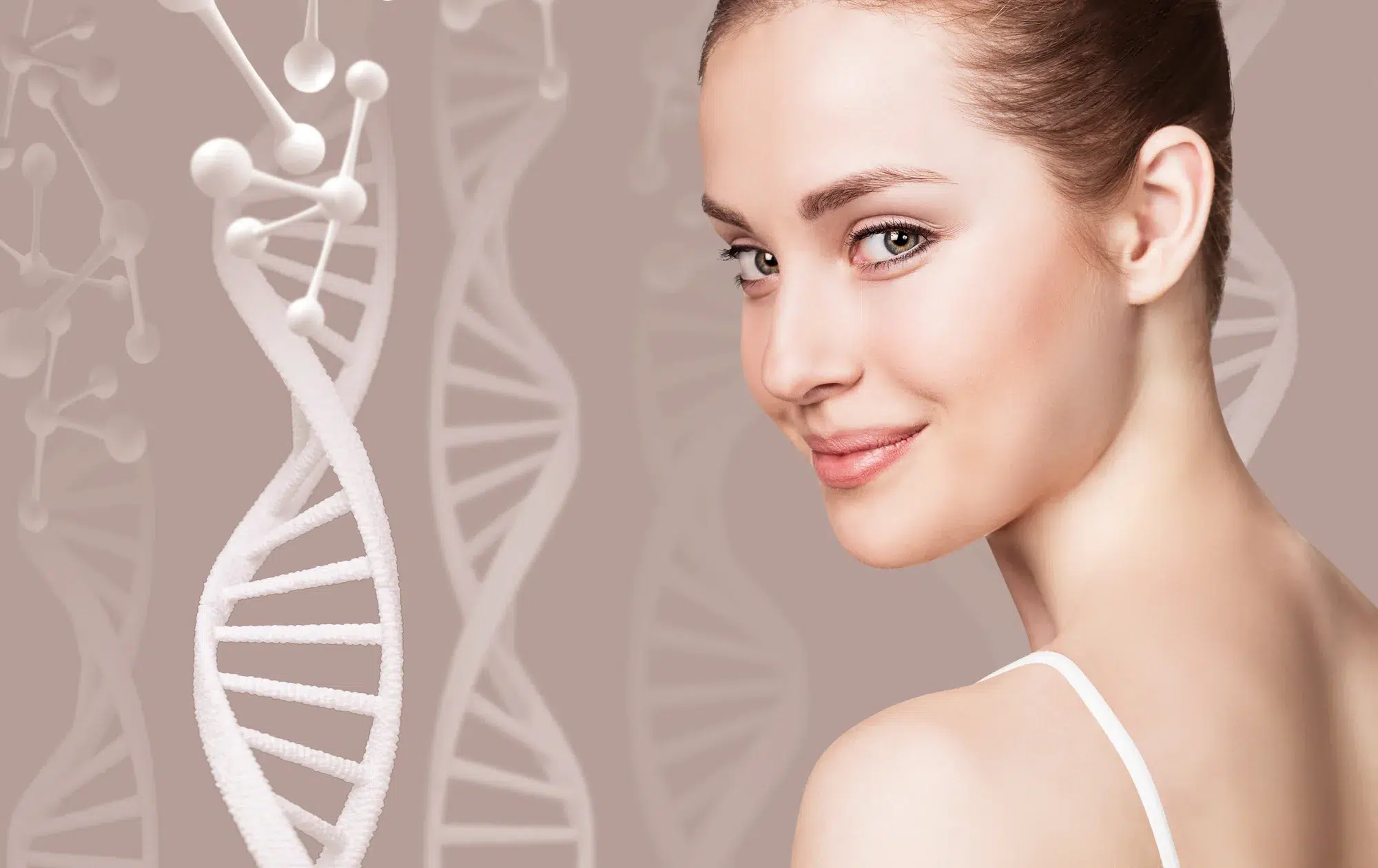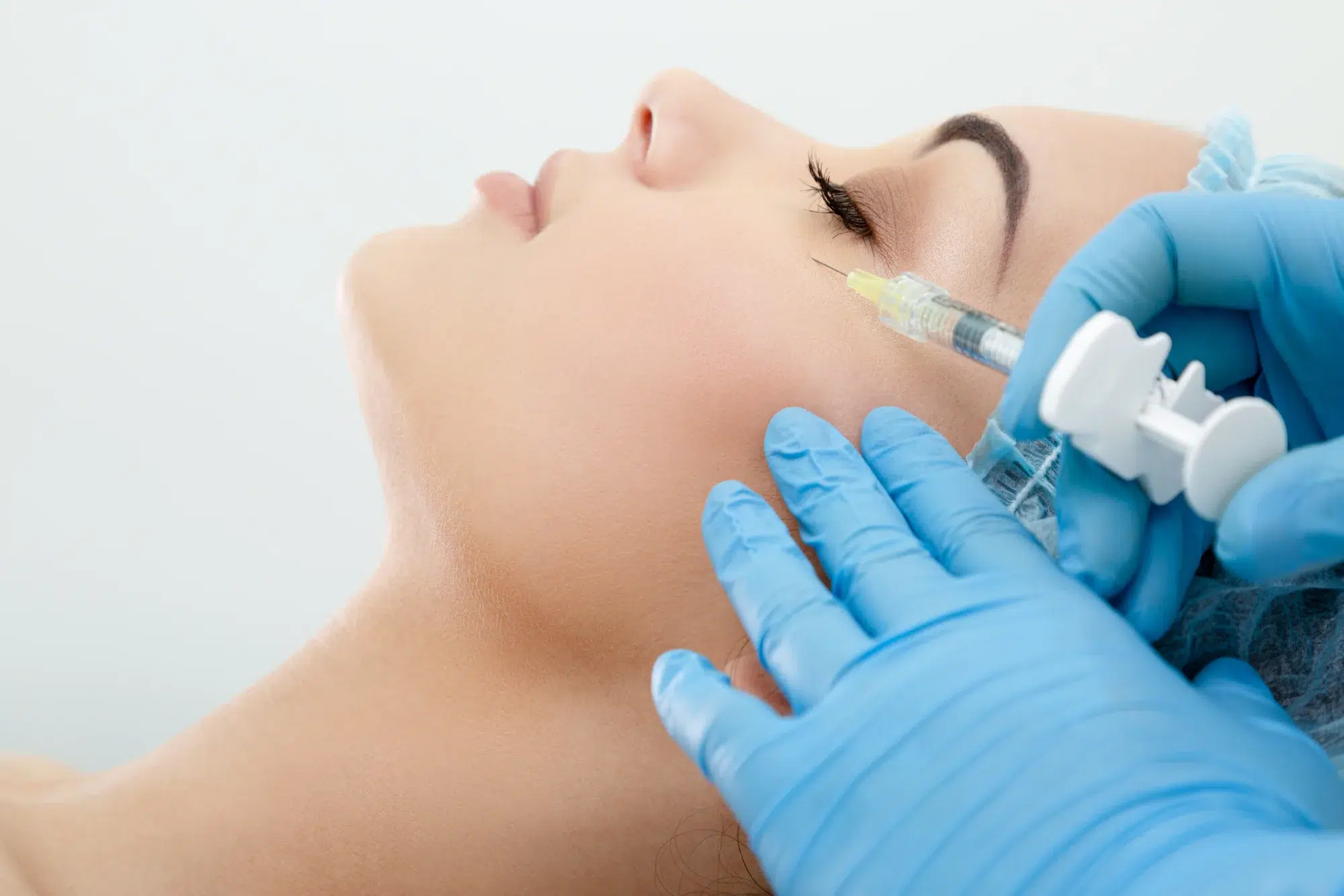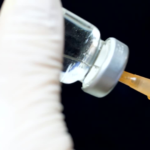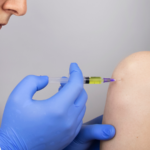
If you work in aesthetic medicine, you are undoubtedly familiar with the hype surrounding exosomes and stem cell treatments. These exciting treatments are still taking center stage at IMCAS, AMWC, and other prominent aesthetic conferences—and for the right reason! Exosomes and stem cells have truly revolutionized our field of work, enabling medical professionals to achieve results that weren’t possible before.
In this article, we will research regenerative therapy in aesthetics and explore the role of exosomes vs stem cells that can enhance cosmetic procedure outcomes and address common aesthetic concerns: from facial rejuvenation to hair restoration. We will examine the latest advancements in regenerative medicine and their implications for aesthetic practitioners while also discussing the potential of stem cell and exosome-containing products like SKINSEQNC and EXOJUV.
Key Takeaways
- Regenerative medicine includes a diverse range of strategies aimed at restoring, repairing, or replacing damaged tissues and organs.
- Stem cells and exosomes have shown remarkable potential in facilitating tissue regeneration and promoting healing.
- Exosomes offer promising benefits because of their ability to improve skin texture, tone, and appearance.
- Optimizing exosome production and understanding their mechanisms of action are essential for using their therapeutic potential in aesthetic applications.
- Further research and clinical trials are needed to validate the efficacy and safety of exosomes in aesthetics and also exosomes stem cells treatment.
What Are Exosomes?
Exosomes possess unique physicochemical properties, allowing them to pass through tissue barriers. They can, therefore, evade the mononuclear phagocytic system, making them valuable therapeutic drug delivery carriers in medical aesthetics. Their lipid bilayer structure prolongs drug circulation time, increases local drug concentration, and effectively controls drug release.
Exosomes Skin Therapy
In the context of exosomes in skincare, understanding exosome biogenesis is necessary for engineering advancements. They are rich in proteins, lipids, and other molecules that promote skin healing, hydration, and protection, which leads to collagen production, reducing inflammation, protecting against environmental stressors, and enhancing the efficacy of other active ingredients.
Exosomes have been found to assist in the treatment of various skin conditions, including scar removal, wound healing, atopic dermatitis, psoriasis, and systemic sclerosis.
Exosomes also offer the potential to mitigate skin damage-induced inflammation by modulating the expression of inflammatory factors and promoting the transition from the inflammatory phase to the remodeling phase of wound repair.
Our top representative in the exosome category, EXOJUV, has harnessed plant-based stem cell technology to offer unparalleled benefits. This product can visibly minimize damage by fostering cell repair and promoting vascular growth. EXOJUV’s anti-inflammatory and antioxidant capabilities offer relief from conditions such as dermatitis, inflammatory acne, and more.
With EXOJUV, your patients can benefit from minimally invasive procedures with minimal downtime, allowing for a smooth integration with existing treatments like mesotherapy microneedling to heighten patient satisfaction and results.
Exosomes Hair Therapy
Besides their potential in skin care, exosomes also show promise in hair therapy, offering a less invasive approach to promoting hair growth by facilitating intercellular communication and delivering growth factors and bioactive molecules.
What Are Stem Cells?
Stem cells possess the unique ability to self-renew and differentiate into various cell types, making them a focus of research in regenerative medicine, including aesthetics. They are broadly categorized into pluripotent stem cells, such as embryonic stem cells, and induced pluripotent stem cells, which can develop into any cell type in the body, and adult stem cells, found in specific tissues or organs, capable of differentiating into specialized cell types within those tissues or organs.
Mesenchymal Stem Cells
Human umbilical cord tissue-derived Mesenchymal Stem Cells (hUC-MSCs) are highly potent due to their secretion of growth factors and cytokines. They promote tissue regeneration, reduce inflammation, and stimulate angiogenesis, making them ideal for anti-aging and regenerative therapies.
In aesthetic medicine, stem cell products like M-SEQNC Serum help tissue regeneration, skin rejuvenation, and hair restoration because of their properties and potential to repair damaged tissues and promote collagen production.

What Is the Difference Between Stem Cells and Exosomes?
Exosomes are a recent, less invasive tool in regenerative aesthetics. These nano-sized vesicles contain bioactive cargo that is important in intercellular communication. Exosome technology is now leveraged in regenerative aesthetic medicine due to its multifaceted role in targeting the main causes of skin aging and improving overall tissue homeostasis. It is expected to be researched and developed further in the future.
In contrast to stem cells, exosomes cannot self-replicate. Stem cells are living cells with the ability to differentiate into various cell types, while exosomes are small vesicles containing bioactive molecules that mediate cell-to-cell communication and play roles in tissue repair and regeneration. Stem cell therapy involves the transplantation of stem cells themselves, while exosome therapy utilizes isolated exosomes for therapeutic purposes.
What Are Stem Cell-Derived Exosomes?
Stem cell-derived exosomes, derived from various types of stem cells, including pluripotent, mesenchymal, and adipose stem cells, have cell proliferation, regeneration, and wound healing capabilities.
These exosomes play a crucial role in skin rejuvenation, wound repair, and the modulation of skin aging processes by altering extracellular matrix compositions, fibroblast proliferation, and reducing senescence-associated changes. Additionally, they contribute to scarless healing – exosomes regulate the expression of key factors involved in extracellular matrix remodeling and inflammation, ultimately promoting improved skin texture and appearance.
Benefits of Exosome Therapy
Studies confirm that exosomes are beneficial for skin care, as they are filled with proteins, lipids, and other molecules that can help promote healing, hydration, and the protection of the skin. These molecules can help to boost collagen production, reduce inflammation, and protect the skin from environmental stressors. Additionally, exosomes can help to increase the efficacy of other active ingredients, such as hyaluronic acid injections, peptides, and antioxidants.
Moreover, exosomes can help in repairing skin damage such as sun damage and acne scars. Exosomal proteins and lipids can help to plump and hydrate the skin, which can help to improve skin texture.
Ingredients of exosomes such as cytokines, nucleic acids, proteins, and other bioactive compounds can also help to protect the skin from environmental stressors and reduce the appearance of dark spots and other discoloration.
Conclusion
Regenerative medicine has brought us two new treatment approaches: exosomes and stem cells: While each has its unique benefits, both support the body’s ability to heal and regenerate on its own. To explore how regenerative therapies can enhance your practice, book a meeting with our sales team.
FAQ
Here are the answers to frequently asked questions about stem cells vs exosomes and their applications in regenerative medicine.
What is Better: Exosomes or Stem Cells?
Choosing between exosome and stem cell therapy depends on the application. Exosomes provide minimally invasive delivery and targeted therapy, while stem cells offer versatility in differentiation and tissue repair. Each has its own advantages and limitations.
Do Exosomes Really Work? Which Products Are Relevant?
EXOJUV Exosomes are a regenerative skincare product containing 5 billion plant-derived exosomes from Asian Centella, combined with a 5ml amino acid complex including sodium hyaluronate, glutathione, and niacinamide, offering potent antioxidant, anti-inflammatory, and regenerative properties.
Are Exosomes Safer than Stem Cells?
Stem cell therapy was gradually applied to regenerative medicine due to its pluripotency, self-renewal and ability to promote the secretion of regenerative cytokines, but stem cell therapy may induce the risk of tumorigenesis and malformation.
Topical exosomes are generally considered safe, although there may be variations in their source and method of isolation. However, their efficacy may vary depending on factors such as the specific application and individual response.
What are the Disadvantages of Exosomes?
Exosomes face obstacles including limited understanding of their mechanisms, heterogeneity in composition, purification difficulties, storage instability, and regulatory concerns. When we overcome those challenges, exosomes can be implemented more widely in aesthetic medicine.
References
- Mao, A. S., & Mooney, D. J. (2015). Regenerative medicine: Current therapies and future directions. Proceedings of the National Academy of Sciences of the United States of America, 112(47), 14452–14459. doi: 10.1073/pnas.1508520112.
- Nowacki, M., Kloskowski, T., Pietkun, K., Zegarski, M., Pokrywczyńska, M., Habib, S. L., Drewa, T., & Zegarska, B. (2017). The use of stem cells in aesthetic dermatology and plastic surgery procedures: A compact review of experimental and clinical applications. Postepy Dermatologii i Alergologii, 34(6), 526–534. doi: 10.5114/ada.2017.72456.
- Semsarzadeh, N., Andrasik, W., & Khetarpal, S. (2021). Stem Cells and Exosomes in Aesthetic Medicine. Yale Journal of Biology and Medicine. Published online February 15, 2021. doi: https://doi.org/10.1016/j.yacs.2021.01.003
- Xiong, M., Zhang, Q., Hu, W., Zhao, C., Lv, W., Yi, Y., Wang, Y., Tang, H., Wu, M., & Wu, Y. (2021). The novel mechanisms and applications of exosomes in dermatology and cutaneous medical aesthetics. Pharmacological Research, 166, 105490.
- Zhang, B., Gong, J., He, L., Khan, A., Xiong, T., Shen, H., & Li, Z. (2022). Exosomes based advancements for application in medical aesthetics. Frontiers in Bioengineering and Biotechnology, 10, Article 1083640. doi: 10.3389/fbioe.2022.1083640
- Vyas, K. S., Kaufman, J., Munavalli, G. S., Robertson, K., Behfar, A., & Wyles, S. P. (2023). Exosomes: the latest in regenerative aesthetics. Regenerative Medicine. Published online January 4, 2023. doi: 10.2217/rme-2022-0134
- Trounson, A., & McDonald, C. (2015). Stem cell therapies in clinical trials: Progress and challenges. Cell Stem Cell, 17(1), 11-22. doi: 10.1016/j.stem.2015.06.007.
- Zhang, K., & Cheng, K. (2023). Stem cell-derived exosome versus stem cell therapy. Nature Reviews Bioengineering, 1, 1–2. doi: 10.1038/s44222-023-00064-2.
- Kost, Y., Muskat, A., Mhaimeed, N., Nazarian, R. S., & Kobets, K. (2022). Exosome therapy in hair regeneration: A literature review of the evidence, challenges, and future opportunities. Journal of Cosmetic Dermatology, 21(8), 3226-3231. doi: 10.1111/jocd.15008.
Buy aesthetic products refers to the act of purchasing items that are specifically designed for enhancing or maintaining beauty, often related to skincare, cosmetics, or procedures in the field of aesthetics. These products can include a wide range of items intended to improve the appearance and health of the skin, hair, and body. Here are some examples of aesthetic products that individuals might purchase:
-
Skincare Products: Including cleansers, moisturizers, serums, and treatments targeting specific skin concerns such as acne, aging, hyperpigmentation, and sensitivity.
-
Cosmetics: Makeup products such as foundations, concealers, eyeliners, lipsticks, and eyeshadows designed to enhance facial features and achieve desired looks.
-
Hair Care Products: Shampoos, conditioners, styling products, and treatments to maintain and improve the health and appearance of hair.
-
Dermatological Treatments: Prescription or over-the-counter treatments for medical conditions like acne, eczema, psoriasis, or rosacea.
-
Aesthetic Devices: Equipment used for professional treatments including laser devices, microneedling pens, radiofrequency devices, and IPL (Intense Pulsed Light) machines.
-
Injectable Aesthetics: Products such as dermal fillers and botulinum toxin (Botox) used to enhance facial contours, reduce wrinkles, and achieve smoother skin.
-
Nutritional Supplements: Supplements aimed at promoting skin health, hair growth, and overall well-being, often containing vitamins, minerals, and antioxidants.
-
Home Use Beauty Devices: Devices like facial cleansing brushes, LED light therapy masks, and microcurrent devices designed for at-home skincare treatments.






